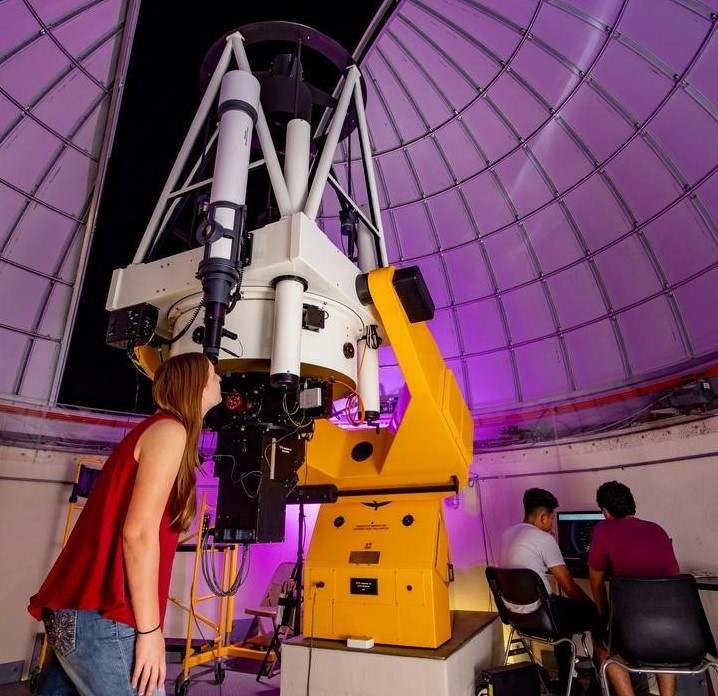Document Type
Article
Publication Title
The Astrophysical Journal
Abstract
We have observed the Virgo Cluster spiral galaxy, NGC 4845, at 1.6 and 6 GHz using the Karl G. Jansky Very Large Array, as part of the Continuum Halos in Nearby Galaxies—an EVLA Survey (CHANG-ES). The source consists of a bright unresolved core with a surrounding weak central disk (1.8 kpc diameter). The core is variable over the 6 month timescale of the CHANG-ES data and has increased by a factor of ≈6 since 1995. The wide bandwidths of CHANG-ES have allowed us to determine the spectral evolution of this core, which peaks between 1.6 and 6 GHz (it is a Gigahertz-peaked spectrum source). We show that the spectral turnover is dominated by synchrotron self-absorption and that the spectral evolution can be explained by adiabatic expansion (outflow), likely in the form of a jet or cone. The CHANG-ES observations serendipitously overlap in time with the hard X-ray light curve obtained by Nikolajuk & Walter (2013), which they interpret as due to a tidal disruption event (TDE) of a super-Jupiter mass object around a 105 Me black hole. We outline a standard jet model, provide an explanation for the observed circular polarization, and quantitatively suggest a link between the peak radio and peak X-ray emission via inverse Compton upscattering of the photons emitted by the relativistic electrons. We predict that it should be possible to resolve a young radio jet via VLBI as a result of this nearby TDE.
DOI
10.1088/0004-637X/809/2/172
Publication Date
8-20-2015
Recommended Citation
Irwin, Judith A.; Henriksen, Richard N.; Krause, Marita; Wang, Daniel Q.; Wiegert, Theresa; Murphy, Eric J.; Heald, George; and Perlman, Eric S., "CHANG-ES V: Nuclear Outflow In A Virgo Cluster Spiral After A Tidal Disruption Event" (2015). Aerospace, Physics, and Space Science Faculty Publications. 325.
https://repository.fit.edu/apss_faculty/325


